ISSUE NO. 23

ART & AUCTION ISSUE
WITH SUPPORT FROM




the breath of water
a blow of wind
a moment of time
the last wave’s foam
the water’s breath

Download the video
with the QR code!

This image is exclusive
and limited edition
for Sybaris Collectors
the breath of water
Simone Berno
2020
Digital artwork
Limited Edition
Artwork dedicated to Earth Day 2020.
Every short is made by 25/35 sequences.
ART MAG BY
SYBARIS
ART & AUCTION
Basic guide to buying your first
work of art at an auction
Sotheby’s
VS Dorotheum
The art of making money
Art & Auction
March 2020, num 23
DIRECTOR Regina de Con Cossío
EDITOR Abel Cervantes
DESIGN AND ART DIRECTION Julio Derbez
WEB DESIGNER Edwyn Miramontes
PHOTOGRAPHS Rogelio Reynoso
EDITORIAL ASSISTANT Katia Briceño
CONTRIBUTORS
Abel Cervantes, Regina de Con Cossío,
Andrea Cuevas, Lucía Peñalosa
SYBARISCOLLECTION.COM
info@sybariscollection.com
+1 (832) 530 3996
+55 (55) 8435 4487
Ig Fb SybarisCollection

SUBSCRIBE TO OUR
ART MAG + ART VALUE REPORT
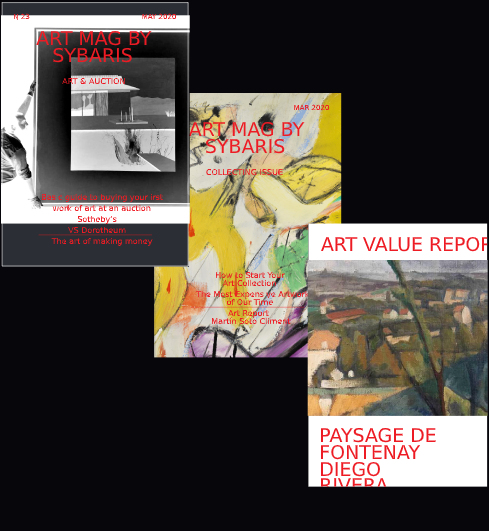
Receive one month our magazine
and the next month our Art Value Report for one year!
Suscribre for
79 USD a year
9 USD one issue
Acquire an Artwork from us and enjoy
the exclusive benefits of Sybaris Collectors
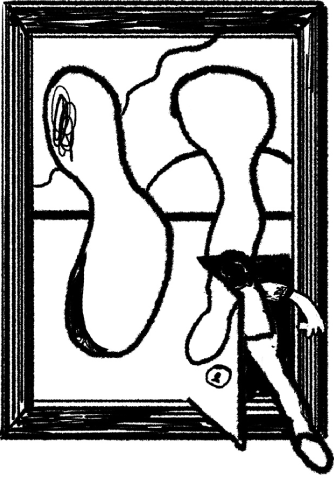
Acquire bimonthly our Art Mag with
articles, essays, profiles, interviews,
listings and more where we give an
account of the most outstanding art
activities of our time.
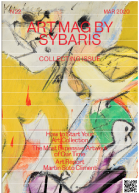
SybarisCollection.com 22
Become a sybarite of art!
Get bimonthly reports with the most
outstanding works and artists
of the art market.
Make the best buying and selling
decisions based on our reports.

Receive exclusive sales of works of art
with special discounts.

PLUS
Free shipping in all our Art Store products
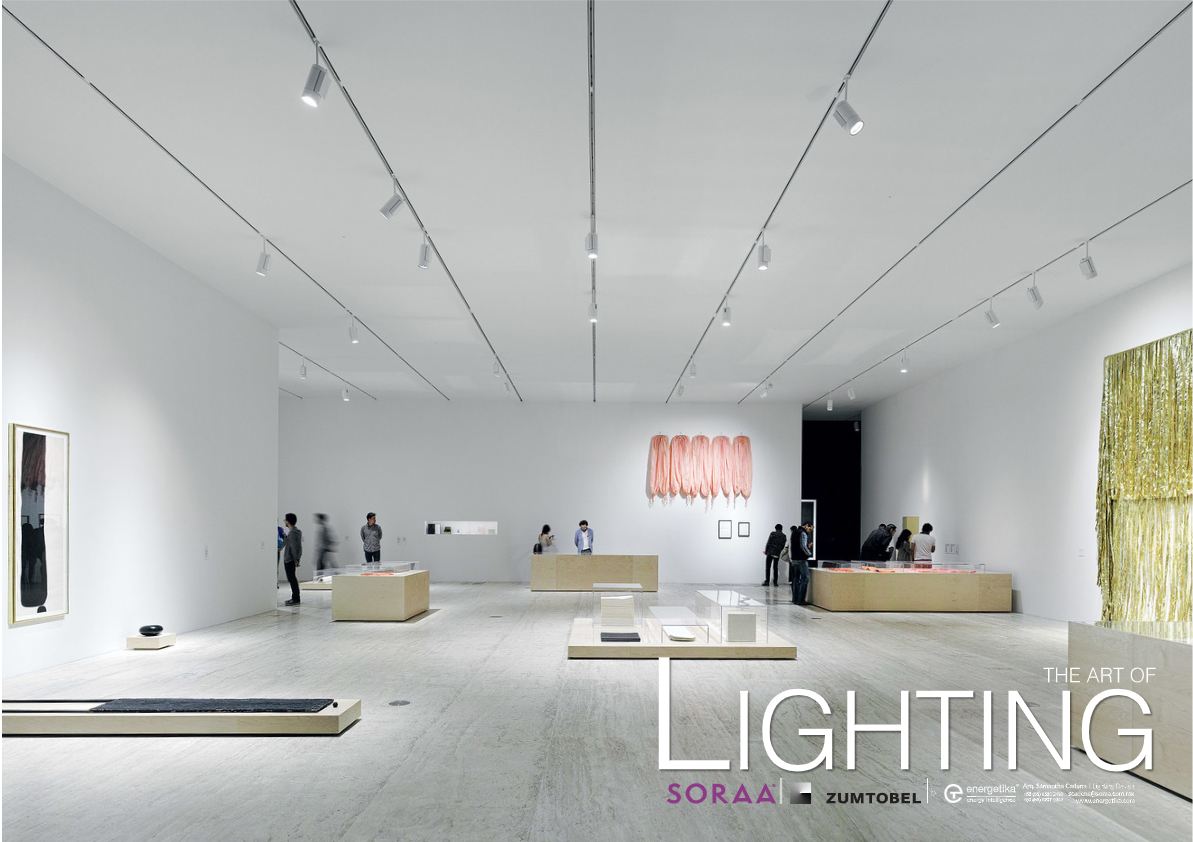
Are you looking for original wallpapers
for your home or office?
Get those that are made by artists
and give a new look to your home
or your workplace!
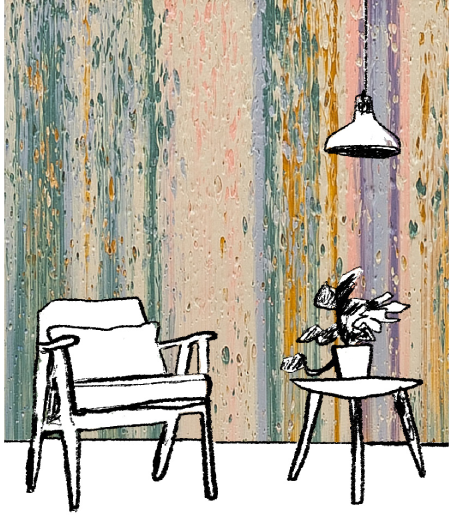
SYBARIS
ART STORE

Browse these exclusive wallpapers and more
limited editions by visiting our Art Store!
sybariscollection.com/store/
CONTRIBUTORS

ABEL CERVANTES is director of ECC. Contemporary Cultural Studies. Communication director of the Tulum International Film Festival, he has been a professor of cinema, language sciences and journalism at UNAM. He is coordinator of the contemporary art publications of the Sybaris Collection. He was editor of the magazines La Tempestad, Código and Icónica. He collaborates in diverse cultural media with texts about cinema, literature and contemporary art.
August 2020, num 24 Ceci n’est pas un virus

ANDREA CUEVAS studied art at the University of the Cloister of Sor Juana. She was Editorial Coordinator in Código Magazine. She has collaborated for print and digital media such as GasTv, La Ciudad de Frenteand Harper’s Bazaar. She is currently studying the master’s degree in Art History at UNAM.

Chief Curator and Art Dealer, REGINA DE CON COSSÍO, guides Sybaris Collection. Curating multiple events around the world, De Con Cossío understands how a space invokes feelings in the occupants, influences the atmosphere and connects the purpose to the design. She received her philosophy degree from the Iberoamericana University in 2013 and a masters from the Freie Univerität Berlin in 2015.

MARIEL VELA studied Art History at UNAM and continues to do independent research on experimental cinema and contemporary art.
BASIC GUIDE TO BUYING
YOUR FIRST WORK OF ART
AT AN AUCTION
18
DOROTHEUMVSSOTHEBY ‘S
24
THE ART OF MAKING MONEY:
THE 5 MOST CONTROVERSIAL
ART AUCTIONS OF RECENT TIMES
30
IS THE ART MARKET
NECESSARY
FOR ART TO EXIST?
36
10 PIECES TO MEET MEL BOCHNER
40
ART VALUE REPORT
CAROLE FEUERMAN
53
Dear Collectors,
With our new issue of Art Magazine we inaugurate a new stage in Sybaris Collection. Following the sybarite spirit (a person with refined tastes who has access to exclusive services and products), the purpose of Sybaris is to redefine yes, the concept of luxury but mainly, the one of pleasure. For us, luxury is not only determined by money, but also by exclusivity and pleasure by the capacity to find and reveal the liked and desired. That an experience is unique can be related to gastronomy, science, politics, sociology and art. In this sense, art is not only a discipline of buying and selling. Before anything else, it is a phenomenon of conscious and unconscious perceptions. Sybaris gives its users and readers the most exclusive experiences to collect art based on values of all kinds, having on mind their taste to find pleasure on the collectibles they want to get. Join us on this new path where we seek that our own lives have a high value not of money, but of meaning.
Attentively,
Regina de Con Cossio
Director

BASIC GUIDE TO BUYING
YOUR FIRST WORK OF ART
AT AN AUCTION
By Lucía Peñalosa
Whether it is because of love of art or as a longterm investment, buying art has its basic strategies, which are also related to subjective factors, such as personal taste and artistic trends of the moment, or technical issues, such as costs and space. In this list we offer you strategies to make the best decision.
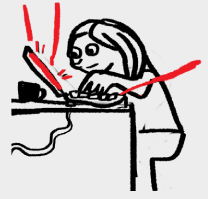
THOROUGHLY REVIEW THE CATALOG
In each auction a catalog is edited with the complete list of works and information of each one. Depending on the auction house or the type of work, it can also include bibliography. With detail, review each catalog, analyze its criteria, terms and references. If you are interested in a piece, find out more about it: where it was exhibited, who(s) was its owner(s) and what has been its behavior in the market. Put special attention in the guarantees, the conditions of the piece, additional fees, etc.

ANALYZE THE ARTIST’S PAST SALES
Normally at auctions you end up paying more than the work is really worth. One way to know if you’re overpaying is to investigate about previous sales of similar works done by the artist. In addition to having an avervage price, you will know how requested the artist work is and decide if it is convenient for you to make the purchase.

HAVE A PLAN A, PLAN B, C, D… Z
Suppose you have already decided on a piece and you are bidding on it, but it get purchased by someone else or its price rises so much that it is no longer within your budget. Your shopping experience does not have to end at that moment. Have a list with more than one piece. Sometimes the second or third option can be more rewarding than the first.

DISTINGUISH BETWEEN BUSINESS OR HOBBY
While buying art can be a great investment, you should be aware that it is long term one. Don’t expect the piece you buy to triple its value in a couple of years. Keep in mind that not all artists or pieces go up in price over time: obtaining a piece is an exciting process for your own collection rather than putting it to circulate in the market. If you want an investment, get in touch with an expert that can advise you from a business-oriented perspective: you will surely have to buy works by popular, and obviously, more expensive artists. But do not underestimate the work of emerging artists: some of them are more likely to increase their value significantly, because they can rise in popularity in a short time.

DON’T BE AFRAID TO ASK
Entering this world can be quite overwhelming, but there are consultants specialized in creating collections and purchase of works of art. They can be found online, through publications on specialized sites, or even in galleries.
Research on pieces and artists is one of the most important things when bidding for a work. If you think that your knowledge is not as extensive or you feel insecure, finding an expert will make things easier for you. For a small commission, in addition to their knowledge, you will gain experience and build professional relationships within the medium.

MAKE A BUDGET AND STICK TO IT
Do your numbers and decide a price which you are comfortable with and don’t get out of it. It is very important that you follow this rule because if you fall in love with a piece, in the heat of the moment you can end up spending money you don’t have. Another option to get the most out of your budget is instead of buying an expensive piece, choose several smaller ones. Don’t put your eggs in one basket. Note that factors such as size, rarity, date of creation, artist, gallery or owner may affect the price

RESEARCH EVERYTHING ABOUT THE ARTIST
AND THE CHOSEN PIECE
Let’s say that a piece captivated you but you know nothing or almost nothing about the artist. Investigate. There are some basic questions you can ask yourself to determine if it is really worth the investment:
Who is the artist? Where she/he studied? Have she/he won scholarships or awards? Does she/he have mentions in important publications, catalogs and interviews? Which galleries represent her/him?
Where she/he has been exhibited? Have she/he had soloshow or group shows only? In which galleries and museums?
Which collectors have purchased a piece of her/his work?
Another important point to take into account is the moment in which the artist finds himself regarding his career. Young artists who are just beginning will be cheaper; artists of medium career or more established ones, more expensive. In the art world, the production period is very important, the longer the artist has been working, the more respected he will be and the more value his work will have, since his style is more defined, in addition to having achieved more exhibitions, awards and acquisitions in important collections, both private and public. For example, if an artists work it’s part of a museum collection, it’s a point in its favor.

CHECK THE POSSIBILITIES OF BUYING ONLINE
You don’t have to go to the auction house: most auction houses offer the possibility of following them and bidding online. To buy online, look closely at the certificates and reports on the condition of the pieces. Stay tuned for market trends as many of the worldwide eventualities, condition the market stability.

SINCE THEIR ORIGIN, art auction houses have positioned themselves as spaces of eccentricity:
they sell works at exorbitant prices (accessible only to a few people), popular and internationally recognized by academics, collectors, journalists and society in general. Who hasn’t dreamed of owning a work by Da Vinci, Picasso or Duchamp? Although auction houses have almost unanimous reputations around the world, none are free from scandal. What are the advantages and disadvantages of these two auction houses positioned in Vienna (Dorotheum) and New York (Sotheby’s)? Here are a few points to consider.
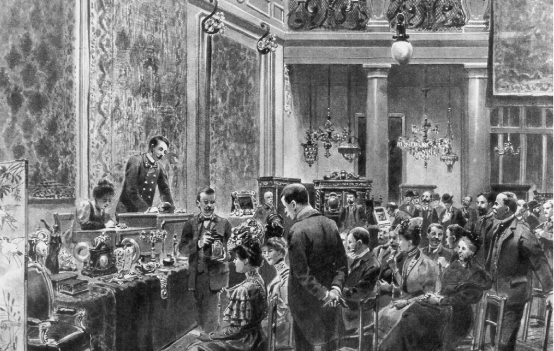
Auctions at Dorotheum
The Austrian institution Dorotheum was born in 1707 under the command of Emperor Joseph I. Sotheby’s opened in London in 1744. The first one acquired the prestige of being the most important in Europe due to its 300 years of history, 8 thousand works of art in its rooms and a high number of sales and lots; however, Sotheby’s evolution does not lack any flattering adjectives: under an entrepreneurial spirit it has reached the first places thanks to Samuel Baker, also a publisher and businessman who led the house to have two retail businesses: Sotheby’s Diamonds, Sotheby’s Wine, Sotheby’s Financial Services, among others. Currently, both occupy a privileged place in the ranking of the highest performing institutions in the world accompanied by Christie’s, Phillips, Bonhams and Artcurial. While Dorotheum has the capacity to hold 600 auctions a year, Sotheby’s works in approximately 250, which can be divided into 70 categories such as contemporary art, impressionist and modern art and paintings by old masters to mention a few in private sales.
According to its own figures, July is the most important month for Dorotheum, which has had as many as 31 auctions in that period. Although the figure reached in that year was not revealed, 2017 was the one that yielded the best profits for them: they sold works by Egon Schiele (including a drawing for 2.34 million euros) and Emilio Vedova: Tensione (1959) reached 792,500 euros.
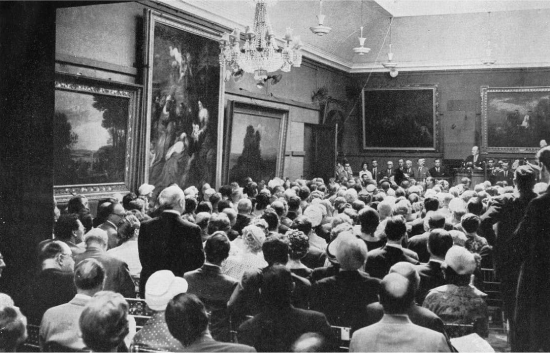
Sotheby’s New Bond Street Gallery for the Sale of Rubens’ Adoration of the Magi, 1959
For its part, Sotheby’s obtained its best sales in 2019 (when it celebrated its 250th anniversary) by generating world records: 4.8 billion dollars, which would position it with the same amount of GDP as countries like Zambia, Ivory Coast or Bangladesh. No more and no less. Monet’s Meules (1890) was sold for 110 million dollars in New York. Sotheby’s diversifies its interests, which makes it one of the most attractive houses in the media. It has an associated real estate company, Sotheby’s International Real, in which it promotes furniture and objects of daily use. In November 2019 the house auctioned off a Star Wars imperial helmet for 70,000 euros. It was an online auction with nearly 100 objects from the franchise created by George Lucas and now run by Disney.
If Dorotheum’s value resides in its masterpieces, Sotheby’s bets mainly on contemporary art. The first houses treasures with historical and referential value; meanwhile, the second auctions prestigious, contemporary works and possibly focuses on a young audience.
Martin Böhm, director and CEO of Dorotheum, mentions that Lucrezia (1593-1654) by Artemisia Gentileschi was sold for 1.8 million euros. Sotheby’s has sold Edvard Munch’s The Scream (1893) for $119.9 million; Jean-Michel Basquiat’s unnamed piece for $110.5 million; and Andy Warhol’s Double Disaster (1963) for $105.4 million at its New York headquarters.
Not long ago, Dorotheum led a controversy because it allegedly confiscated artwork from Jewish citizens during the Nazi era. Rumor or truth, the news disappeared almost immediately and the information about it is little and contradictory. This was reflected in 2001 when Norbert Grund’s landscapes were removed from the house and returned to the alleged “owners2.
Sotheby’s is not far behind. The English house was the site of the biggest scam in the history of art, when on September 15, 2008 Damien Hirst inflated the price of his works, helped by his allies, to over $200 million. 9 years later, in an article entitled “The False Narrative of Damien Hirst’s Rise and Fall” for The New Yorker Felix Salmon wrote about it, “He got rich, his galleries got rich, his collectors got rich, everybody was happy. But, then, in 2008, he got a bit too cocky when he auctioned off two hundred million dollars’ worth of art, fresh from his studio, at Sotheby’s, bypassing dealers entirely. That auction marked the end of Hirst as an art-market darling: his auction volumes and prices dropped, and bitter collectors who had spent millions on his art were left with work worth much less than what they had paid for it”. Two years ago Sotheby’s was perhaps the most talked about auction on social networks when a painting by Banksy triggered its own destruction when it was sold. With this transgressive action, the auction house became a space where a small and ephemeral work of art was created.
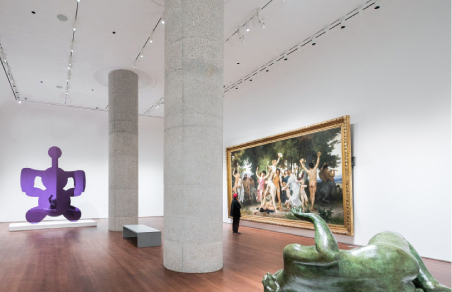
THE ART OF MAKING MONEY:
THE 5 MOST CONTROVERSIAL
ART AUCTIONS OF RECENT TIMES
by Andrea Cuevas
ART MARKET HAS COMMONLY BEEN DESCRIBED as the most sinister character in the art world. If Dante lived in ourtimes, he undoubtedly would include the art auctions as part of the lowest circles of the Inferno where fraud and treachery prevails. But not everything is as bad as it seems: the art market is so necessary as the artists are to keep alive the art as a social and economic system. Nevertheless, as all kind of economic market, art auctions works under very specific dynamics. Their main goal is to sell artworks to the highest price as possible. That’s why they and some artists has some tricks to achieve their purpose. We have selected 5 of the most controversial art auctions of recent times, which addresses questions of fraud, the authenticity of the work of art or ethical issues. Controversies in the art world can help the works acquire a value beyond the monetary: they can become authentic anthropological objects on the history of humanity.
1
GIRL WITH BALLOON BY BANKSY (2018)
What would you think if you acquired a painting and a second later it is self-destroyed? Shortly after being sold in €1.2 million in Sotheby’s, one of Banksy’s most iconic spray artworks turned into strips while the painting began to pass through a shredder which was installed on the frame by the artist himself. What for some people was a radical prank, for some others was the most critical gesture the street artist could have against the dynamics of capitalism inside the art market. But while trying to play with the multimillionaire auction rules, Banksy wasn’t succeed in being critical as the value of the work increased once the painting was destroyed. In a way, Girl with Balloon turned into a totally different piece once the original one disappeared.

2
DAMIEN HIRST VALUE: $200 MILLION (2008)
Regardless of whether his work it is or it isn’t art, Damien Hirst is, par excellence, an artist made for and by the market. And whether we like it or not, everything he does pass under scrutiny to be criticized or celebrated. It isn’t that what art is for? To stimulate critical discussions? Of course I’m being ironic. The truth is Hirst should be better known by his tricky manners as an artist: during an official auction, he order his team to bid for his own works in order to increase their value. Over 223 artworks were sold by the outrageous rate of $200 million. Well played for him isn’t? But is this honest? Is this the way art become valuable?

4
MY BED BY TRACEY EMIN (2014)
One bed, dirty bed sheets, cigarettes, empty vodka bottles, thrown clothes, a teddy bear, condoms and a lot of garbage. All those things were sold for €3.2 million in 2014, tripling the estimated sale price. This turned Tracey Emin into the most expensive alive
female artist. It was also considered as one of the most controversial art sale in the 21st Century for being such an “intimate object” displaying bad habits traces. Emin has said about My Bed that is a very personal self-portrait: «a self-portrait no one wants so see».

3
SKETCH BY DONALD TRUMP SOLD FOR $16,000 (2018)
Is Donald Trump an artist? Of course not, he is the USA president! Wait a minute: in 2017 a sketch of the Empire State Building draw by him was sold for $16,000 in a New York official auction. The sketch, according with an art critic, it isn’t good neither bad. Art criticism shouldn’t be paying attention to the aesthetic or artistic values in this case, but focusing on the powerful role of the auction houses and the art market in defining what could be considered as art. Even most importantly when talking about a powerful businessman widely known for his sex assaults and his cruel migration politics. There are several cases in the history of the art market in which sketches or signed napkins—as the one signed by Tracey Emin and architect David Adjaye, among others, sold in £1,500— reaches extraordinary numbers, taking the importance or value of art to the spectacle domain.

5
SHOOTING ON THE AIR BY DANA SCHUTZ (2016)
After being pointed out as racist for showing at the 2017 Whitney Biennial her painting Open Casket, which depicts the body of Emmett Till, a 14-year-old black boy who was tortured and murdered by two white men in 1955, Dana Schutz was involved in another controversy. His painting Shootin on the Air (2016), which is inspired in the on-air murder of two tv journalist, was sold during a Christie’s auction in New York for $1.1 million. This kind of issues address the attention to how lucrative some social problematics can be. It also the case of Civil Planning (2004) sold for $2.4 million. According to Schutz’s gallery by the time of the auction, the piece meant to be donated to the MoMA and that’s why the artist agreed to sold it. However, the owner broke the deal and take the piece to his own private collection.

THE URGE
TO DESTROY IS ALSO
A CREATIVE URGE.
–Banksy quoting Picasso
when commenting on what
happened in 2018 when a
work of his was destroyed
after being auctioned off
at Sotheby’s

IS THE ART MARKET
NECESSARY
FOR ART TO EXIST?
By Abel Cervantes
ART IS SOLD. AND IF IT IS SOLD, IT MUST BE BOUGHT. Otherwise, its value may not achieve the status it seeks: to become a piece of art. So, if an artist wants their name to circulate in museums and galleries, as well as in magazines and the media, the first thing to do is sell their work. This way, research and production hours can turn into work. The question is not idle. In the academic and journalistic universe, not to mention the general society attending museums and galleries, the question of whether art should get involved with greenbacks is, to say the least, uncomfortable. How is it possible that a person receives money for painting a picture or for placing a shoe box on the ground?
Doubt is less innocent than it sounds. Despite living in a cultural space that works through — mostly economical — exchanges, society expects its artists to live from emptiness, to creatively procure themselves and to deliver their work as if it were a divine good. This conception is probably related to the ancient belief that the artist was a kind of enlightened being (touched by God) who, resolved by inspiration, created something beautiful that must be admired.
Duchamp died more than 50 years ago, but his legacy is more alive than ever. Along with the avant-garde of the early twentieth century, contemporary art opened a new path where concepts such as inspiration, beauty and creativity were replaced by research, work and discourse. Contemporary art is not about an occurrence of a few enlightened beings who wake up at 3 in the morning to portray the images they just dreamed, but rather an activity that is inserted directly into the capitalist system to claim their place: the artist can represent, question or extend the limits of the discourse and in order to achieve it, time, research and materials are required. Subsequently, they require a circuit that meet their demands and circulates their work so that it is treasured, put into crisis and, if they are lucky, belongs to the art system. It is not an easy task. And it is not achieved in a short period of time. Of course, not everything in contemporary art goes through a cultural, anthropological or artistic process. Just over 10 years ago, on September 15th, 2008, a certain Damien Hirst got the biggest scam in the art world.
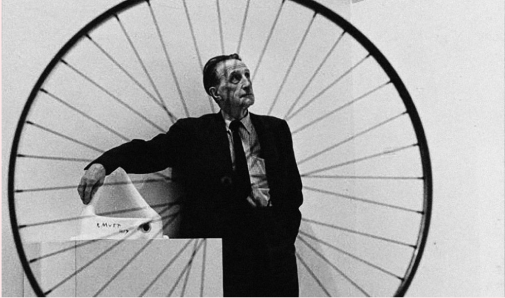
© Martin Lazarus/ Association Marcel Duchamp/ADAGP
The British, who does not actually produces his own pieces, but assigns the work to a series of professionals who work for him, sol 223 lots of works of art for more than 200 million dollars, a historical record, with the eventuality that at least half of the proceeds came from their relatives. The act performed at the Sotheby’s auction house was interpreted by some critics as a performance art, while some of us thought that the bad joke was only a reflection of the absurdity of what Franco Berardi Bifo has called semiocapitalism: the ability to inflate the market by means of signs coming from speculation fundamentally. Two works (one literary and one cinematographic) expose what I feel when remembering that moment: 1) The beginning of Michel Houllebecq’s The Map and the Territory, where the main character paints a work where Hirst and Jeff Koons star in an auction. At the end of the first chapter, and raged by anger, Jed Martin breaks the picture that had taken him months to get rid of the feeling that saddens him. 2) Nocturnal Animals, by Tom Ford, where the cold and desperate Susan (Amy Adams) owns
two works by these artists as a harbinger of the inevitable: she can have anything she desires except for the past, which materializes in longing for an old love that will never return.
And how to calculate the value of a piece of art? There are no answers. If the art world has a quality that only few professions
share, it is its combination of anthropological, sociological, economic, political and aesthetic events that surpass anybindividual. Artists do not achieve their status for their intelligence or how many hours they spent researching. Packed with contradictory and malleable discourses, the current art world is perhaps one of the most interesting spaces for experimentation. For this reason, we must accept its ability to produce stimulating pieces from psychoanalytic, love or political perspectives. On one hand, Louise Bourgeois’ surprising spiders, on the other, the superficial metallic animals such as Jeff Koons’ rabbits and dogs. (It is a reverse movement. While the first one understands art as a space of risk and experimentation to later make it available to the market, the second one conceives a product that has no purpose other than to sell.) There’s something undeniable here: without the art market, art would not exist. Not only because artists would starve (art creation would be only possible for a privileged few), but also because the value of any work materializes as value and then, profit. It is undeniable that there are pieces that synthesize transcendent feelings, concerns, stories and wishes. Unfortunately, there are others that can only represent their ability to sell themselves: their own shallowness.
FEATURED ARTIST
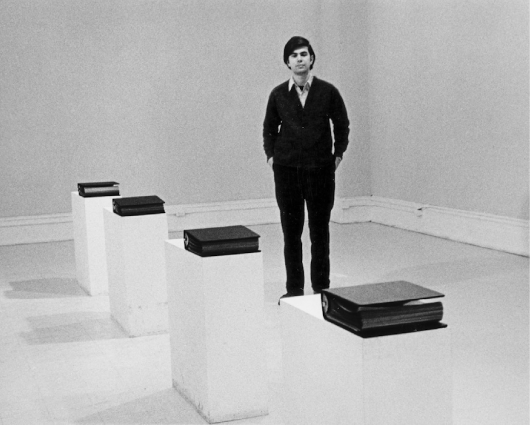
10 PIECES TO MEET MEL BOCHNER
MEL BOCHNER (PITSBURGH, 1940) is one of the most notable American artists today for his development in conceptual art since the 1960s. He began his career with the idea of breaking with abstract expressionism and habitual compositions. Bochner, the seventh most consulted creative at Artsy in 2019, fuses interests of painting, writing and space to present unique pieces. His work is made up of drawings, paintings, interventions and installations, some of which deal with themes such as communication through language. The creator’s legacy has been valued in different parts of the world and his canvases and monotypes can be estimated at between 6,500 and 52,000 euros. We review 10 essential works to understand your artistic interests.
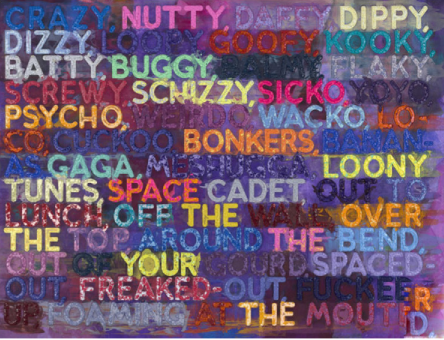
1. CRAZY (2019)
Monotype with collage, engraving and reliefs
on hand-painted Twinrocker paper
127 ×165 cm.
Crazy, Loony and Psycho are some of the words of Crazy (2019), made based on monotype and collage, intervened with engraving and reliefs. Bochner showed his work for the first time at the New York School of Visual Arts; due to the lack of funds, they had to be shown photocopies to the spectators. In his work there is a great challenge: reading and looking at the painting at the same time. His father was a painter of advertising signs, hence his interest in experimenting with words.
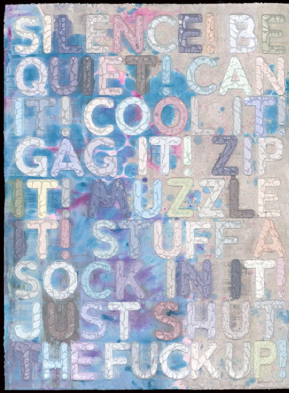
2. SILENCE (2019)
Monotype with collage, engraving and reliefs on
hand-painted Twinrocker paper
81 × 52 cm
For Bochner the painting must say something transcendent, otherwise it is not worth listening to. When looking in our environment we find words and texts that illuminate walls, spaces and cities. Mel says “Silence” in a monotype with collage, engraving and relief on Twinrokcer hand-painted paper to face adversities from another point of view. After preparing to be a painter, Bochner decided to explore other techniques. However, he considers himself a painter who does not paint. His purpose in art is to be direct, wrap the message or reveal it.
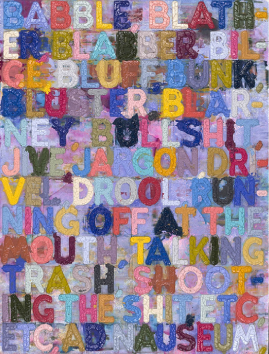
3. BABBLE (2019)
Monotype with collage, engraving and reliefs
on hand-painted Twinrocker paper
160 × 120 cm
A characteristic of Bochner’s work is his ability to seduce through verbal information. The pictorial, the color, the plane and the surface are secondary elements when compared to the linguistic universe that it uses. From 1965 he omitted his participation in the world of painting and it was up to a decade after he recovered it; now color is their main ally. Bochner has used his work tool as a means of expressing his feelings and questioning the functionality of art and the world in which he finds himself. Such is the case of works in which he takes up cards and small papers to write sentences of this type.
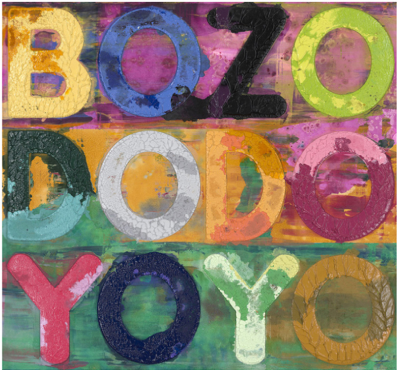
4. BOZO (2019)
Monotype with collage, engraving and reliefs
on hand-painted Twinrocker paper
109 × 119 cm
The American artist points out the difference between reading something and seeing something, because different parts of the brain are used for each activity. When interpreting their works, viewers observe colors, surfaces; linguistic meanings are not at first sight. In a second moment, however, the observer discovers that color is an obstacle to deciphering the meaning of the words. This playful relationship between the work and the viewer is an attempt to confuse the audience: it seems to question our own process to appreciate art.
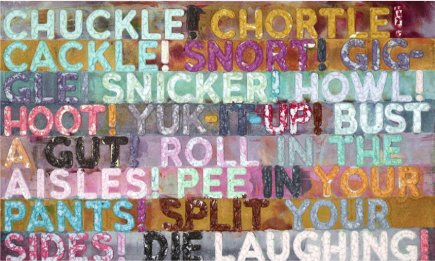
5. CHUCKLE (2016)
Monotype with collage, engraving and reliefs
on hand-painted Twinrocker paper
45 × 76 cm
When looking at a Bochner painting we find words and synonyms, but the meaning of these changes as you look at them. The artist thought about the semantic walk that his work would have when it was exhibited and, for this reason, there is an emotional exercise for the person who watches them carefully. The words he places in his works do not mean the same for everyone who looks at it, there are always different interpretations. For him, his words cannot be considered poetry, but he does perceive them as rigorous forms of language.
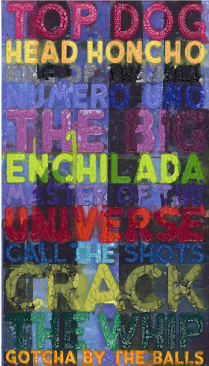
6. TOP DOG (2019)
Monotype with collage, engraving and reliefs
on hand-painted Twinrocker paper
160 × 90 cm
Bochner has been in charge of exploring the usefulness of language and communication between receivers and emitters. It reminds us that the observer often attributes character and meaning to things that are sometimes inanimate objects. Language is not transparent is the term that began to be used in 1969 to describe works with a title on paper.

7. ERADICATE (2019)
Monotype with collage, engraving and reliefs
on hand-painted Twinrocker paper
81 × 52 cm
Bochner’s works have been rated as complicated. The text is the central source of the work and the artist seeks to send a message on topics related to language. Bochner writes, exhibits, and we read. We follow his words until we find a possible meaning. His
interest in language revived when he saw the new edition of the thesaurus. From this moment on, he remembered the years that have passed and his perception of ordinary language changed.

8. BLAH, BLAH, BLAH (2019)
Monotype with collage, engraving and reliefs
on hand-painted Twinrocker paper
125 × 183 cm
The artist has been acclaimed for his paintings Blah, Blah, Blah (2019) and HA, HA, HA (2019). His first experiment with these words was in 2008 when he thought that if “the black hole of language” existed, then “Blah Blah Blah” had the possibility of being anything when used in conversation. This expression denotes intimacy and abbreviation. And it is used to display a phrase that may be meaningless (or just the opposite). Bochner mentions, “We live in a world that is overcrowded with empty language: small conversations, tweets, texts, leet speak, chit-chat, pop-up ads, telephone answer messages (‘your call is important to us …’) , warnings on medicine bottles (‘if you have an erection that lasts more than four hours …’). If this linguistic tsunami cannot be escaped, the paintings of ‘Bla, Bla, Bla’ subvert it from below. ”

10. FOOL (2019)
Monotype with collage, engraving and reliefs
on hand-painted Twinrocker paper
127 × 167 cm
The American creator is interested in seeing what his work causes to others instead of looking at the direct interpretation of it. As his work transforms over the years, he wants to be more and more inside his works and just that is the result he wants for many: to lose himself inside them. In an interview with ArtDependence he mentions, “What I’m trying to do is make the painting physical and complex enough to lose intellectual control. Getting into painting is not the problem, it’s how to get out of it.”

9. HA, HA, HA (2019)
Monotype with collage, engraving and reliefs
on hand-painted Twinrocker paper
51 × 57 cm
Interested in inverting in Mel Bochner’s artworks?
Get in touch:
+1(832) 530 3996
+55(55) 8435 4487
info@sybariscollection.com
ART VALUE REPORT

CAROLE
FEUERMAN
ART VALUE REPORT
CAROLE
FEUERMAN

CAROLE FEUERMAN
(Hartford, Connecticut, 1945)
CAROLE FEUERMAN is one of the most important sculptors in the United States. Some critics point out that she is at least
part of the top five list. Hyperrealist artist since the 70s (she was one of the founders of this movement), Carole Feuerman
has practically exhibited in the most important museums in the world: from New York to Venice and Beijing. Her works belong to famous collectors such as Hillary Clinton, the Art Foundation of Frederic R. Weisman, Henry Kissinger, the Art Foundation of Mikhail Gorbachev, the Collection of the Magazine Malcolm Forbes or the Hermitage Museum of Russia. Related to the pop spirit of the 60s, Feuerman seeks in her sculptures the precise detail of the bodies. However, her work with color seems to tell us something else: the chromatic intensity cannot be a simple representation of reality, it must have its own language. Feuerman defines her vocation thus in her own words: “Through my sculptures, I convey my feelings about life and art. It is easier for me to express my emotions through sculpture than using words. I portray the life of each image to capture the passion and sensuality of the subjects. In this way, my work speaks to the viewer, evoking an emotional and intellectual response.”

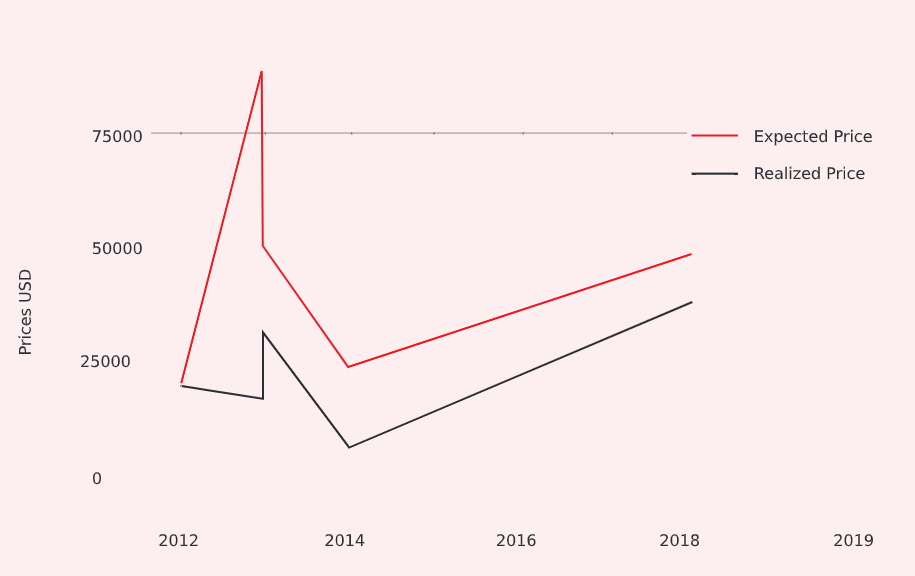
What indicators do we provide
to consider an Artwork Performance?

Mobility Rate
The mobility rate is a quotient between 0 and 100, it indicates the acceptance in the market for a specific artwork (or artist) in a specific year. This value reflects the successes in the attempts of transaction, the closest to 100 this value is, means that for that year the artwork was more appreciated by the buyers. It is useful since it indicates how easy an artwork was sold or bought

Estimated Market Price
Sybaris Collection establishes a market price of the artworks of an artist using statistical techniques that guarantee the price reflects the market’s dynamic. The value obtained is expressed in the monetary unit MXN dollar. Use: quantify the performance
of the investment made in an artwork for a fixed period.

Sybaris Collection Global Index
This index allows to observe the rise in an artwork’s price taking a date as reference. If we take 2010 as base year, and we observe a value of 110 in 2015, this means the price rose 10% in five years. This index is useful since it gives us an idea of the tendency the artworks’ prices follow in the market. It also allows a similar analysis to the one made for an action in the stock exchange.
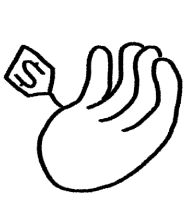
Transactions indicator
The transactions indicator is a tool that measures and groups by price the number of artworks by an artist sold in a specific year. This indicator is useful since it allows you to classify the sales for an artist by their prices in order to know the expected price when selling the artwork. In this case, the heterogeneity of the artworks is not being considered, so the indicator should be seen as a description of the reality and not as a future estimator.
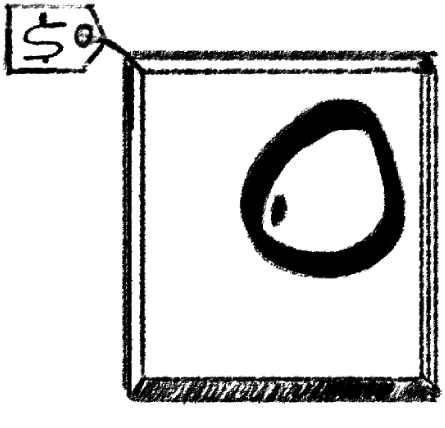
Find in each of our magazines an Art Value Report with the most important artists and works of today.
Do you want to value the works in your collection or would you like to have the Art Value Report of a piece that interests you? Ask for it right now.
info@sybariscollection.com
+1 (832) 530 3996
+52 (55) 7158 6815
79 dollars
Legal Disclaimer
The service Art Value Report is an estimate
service, not an appraisal.
It is issued on the basis that the submitted artwork is authentic, in good condition and of flawless provenance. An estimate has
no legal force and serves for information purposes only.

SYBARISCOLLECTION.COM
info@sybariscollection.com
+1(832) 530 3996
+55(55) 8435 4487
Ig Fb SybarisCollection




